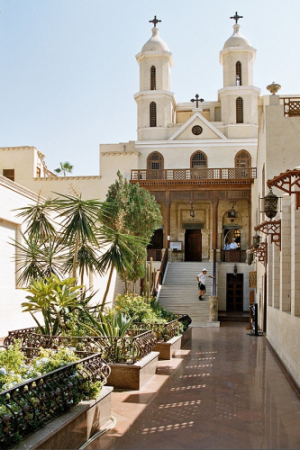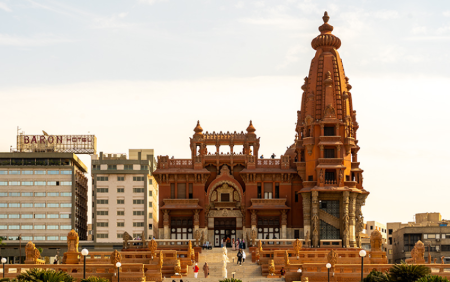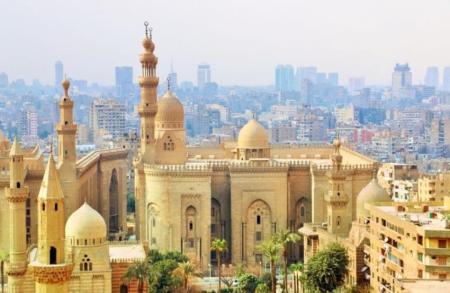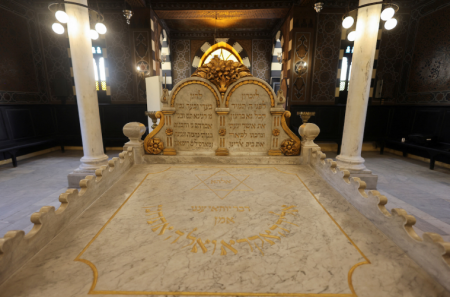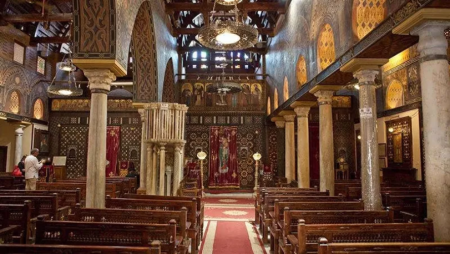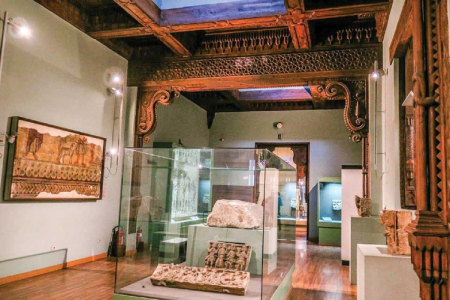Al Azhar Park

Al Azhar Park: Cairo’s Green Oasis of History, Beauty, and Urban Revival
In the heart of Cairo city, Al Azhar Park rises like a lush emerald crown amid the golden hues of Egypt’s ancient capital. This urban paradise isn’t just a park—it’s a living symbol of renewal, sustainability, and historical preservation. Stretching across 74 acres, Al Azhar Park embodies the remarkable transformation of a centuries-old garbage dump into one of the most beautiful public gardens in the world. Commissioned by the Aga Khan IV and opened in 2005, this space has since become a cherished escape for both locals and travelers seeking tranquility, panoramic views, and a glimpse into Cairo’s layered heritage.
Visitors entering Al Azhar Park immediately sense its harmony—a perfect blend of traditional Islamic design and modern environmental planning. The park’s elegant fountains, symmetrical pathways, and blooming gardens stand as a testament to Egypt’s commitment to cultural and ecological revival. It overlooks the medieval skyline of Islamic Cairo, offering stunning vistas of landmarks such as the Citadel of Salah El-Din, the minarets of Al Azhar Mosque, and the ancient domes of Sultan Hassan Mosque. Surrounded by history yet teeming with life, the park bridges Cairo’s glorious past with its dynamic present.
Whether you’re exploring Egypt through comprehensive Egypt Travel Packages or enjoying local Cairo Day Tours, Al Azhar Park deserves a top spot on your itinerary. It’s the perfect destination to relax after visiting nearby treasures such as El Moez Street or the bustling Khan al-Khalili Cairo bazaar. With shaded groves, open-air cafes, and serene lakes, this oasis has redefined urban recreation in the Egyptian capital.
The Creation and Vision of Al Azhar Park
Al Azhar Park’s story begins not with green fields but with barren land. For over five hundred years, the site served as a dumping ground for debris from Cairo’s old city walls. The Aga Khan Trust for Culture envisioned something extraordinary—a sustainable project that would not only provide much-needed green space but also revive the surrounding historic neighborhoods. The park was designed as part of the ‘Historic Cities Support Programme,’ aiming to restore balance between Cairo’s architectural heritage and modern development.
Through meticulous planning, engineers and landscape architects transformed heaps of rubble into fertile terrain using modern irrigation systems, soil restoration techniques, and native plant species. Today, the park boasts over two million plants representing hundreds of species, creating a rare biodiversity hub in urban Egypt. This visionary project highlights how cultural heritage and environmental consciousness can coexist, turning forgotten land into a symbol of hope and renewal.
Architectural Design and Landscape Layout
The layout of Al Azhar Park draws inspiration from traditional Islamic gardens, particularly Persian and Andalusian influences. Geometric pathways, sunken gardens, and reflecting pools evoke a deep sense of order and tranquility. Each section of the park unfolds like a chapter in Cairo’s story—from its manicured lawns to its shaded courtyards and vibrant terraces. The design encourages visitors to wander slowly, discovering new perspectives at every turn.
Central to the design is the broad promenade leading to the hilltop pavilion, offering one of the best panoramic views in Cairo. From here, you can admire the sprawling cityscape dotted with domes, minarets, and the distant outlines of the Great Pyramids of Giza on a clear day. At sunset, as the sky turns crimson, the view becomes a magical spectacle—a poetic fusion of light, history, and nature.
Cultural Significance and Community Impact
Beyond its visual beauty, Al Azhar Park represents social progress and community development. The project spurred extensive restoration work in the neighboring Darb al-Ahmar district, one of Cairo’s oldest areas. Historic mosques, madrassas, and houses were rehabilitated, giving residents renewed pride in their heritage. The park also created jobs, enhanced tourism, and improved local infrastructure—proving how green initiatives can generate cultural and economic value simultaneously.
Dining, Recreation, and Events
Al Azhar Park is more than just a place for picnics and strolls. It’s a dynamic venue for cultural exchange and celebration. The park houses several restaurants offering Egyptian and international cuisine, the most renowned being the hilltop restaurant, where diners enjoy traditional dishes while overlooking the city’s illuminated skyline. The café terraces are perfect for sipping mint tea and watching the world go by. Concerts, festivals, and art events are regularly hosted, turning the park into a pulsating hub of Cairo’s creative scene.
Families flock here for leisure, couples for romance, and photographers for inspiration. The park’s serene lakes, cascading fountains, and palm-lined avenues provide countless opportunities for breathtaking snapshots—perfect for travelers seeking the best Instagram spots in Egypt. Whether you visit at dawn or dusk, the park offers a different charm with every hour.
Best Time to Visit Al Azhar Park
While the park welcomes visitors year-round, the best time to visit is during the cooler months from October to April. The weather is pleasant, flowers are in full bloom, and the views are crystal-clear. Evening visits are especially rewarding, as the city lights come alive beneath a starlit sky. During Ramadan, the park transforms into a festive haven filled with lanterns, music, and laughter—a true reflection of Egyptian hospitality and joy.
Sustainability and Environmental Innovation
Al Azhar Park stands as a benchmark for sustainable urban design in the Middle East. The project implemented advanced water management systems, utilizing treated wastewater for irrigation. This innovation ensures resource efficiency in a region where water scarcity is a pressing concern. The park’s plant selection favors drought-resistant species, maintaining greenery throughout the year while minimizing environmental strain.
The park also serves as a green lung for Cairo, absorbing carbon dioxide and mitigating the city’s pollution levels. Its design combats the urban heat effect, creating a microclimate that cools surrounding neighborhoods. Environmental education programs are conducted to raise awareness among visitors, making Al Azhar Park not only a recreational space but also a center for eco-conscious learning—a vital example of eco tours in Egypt at their finest.
Historical Landmarks Visible from Al Azhar Park
From nearly every corner of Al Azhar Park, history whispers through the skyline. The southern view showcases the majestic Alabaster Mosque within the Citadel. To the north, the ancient walls of Fatimid Cairo stretch along, leading the eyes toward the timeless beauty of Coptic Cairo (Old Cairo). Nearby, the minarets of the Al Rifai Mosque and Mosque of Ibn Tulun rise gracefully, echoing centuries of Islamic artistry. Standing on one of the observation terraces, you can almost trace Cairo’s evolution—from its medieval heart to its modern sprawl—against a backdrop of timeless desert light.
Why Al Azhar Park Should Be on Every Traveler’s Itinerary
Every traveler to Egypt searches for a moment of calm amidst the city’s chaos, and Al Azhar Park delivers just that. It’s not only an architectural gem but also a soulful retreat. It provides a rare opportunity to reflect, unwind, and appreciate Cairo’s diversity from a single vantage point. For families, it’s an educational journey; for photographers, it’s a visual masterpiece; for historians, it’s a living textbook of urban restoration. In short, visiting Al Azhar Park completes the experience of exploring Egypt—a nation where history breathes in every breeze.
Frequently Asked Questions About Al Azhar Park
1. Where is Al Azhar Park located?
Al Azhar Park is located in central Cairo, near the Darb al-Ahmar district and just east of Islamic Cairo. It’s easily accessible from major landmarks such as the Citadel of Salah El-Din and Al Azhar Mosque, making it a convenient stop for anyone exploring historic Cairo.
2. What are the opening hours and entrance fees?
The park typically opens from 9:00 AM to 10:00 PM, though hours may extend during weekends and holidays. Entrance fees are modest, helping maintain the park’s facilities. Special rates often apply for students and locals, ensuring accessibility for everyone.
3. What can visitors do at Al Azhar Park?
Visitors can stroll through landscaped gardens, enjoy panoramic city views, dine at hilltop restaurants, or attend musical performances and cultural events. The park is also popular for picnics, photography, and bird-watching. It’s the perfect place to relax after exploring nearby attractions.
4. How does Al Azhar Park contribute to Cairo’s environment?
Al Azhar Park plays a crucial role in improving Cairo’s air quality and biodiversity. Through responsible landscaping, water recycling, and tree planting, it mitigates pollution and provides a refreshing escape from urban heat. It also serves as a model for sustainable development across Egypt.
5. What’s the best way to visit Al Azhar Park?
The easiest way is to include it in guided Egypt Excursions or private Egypt Vacations Packages. Most tours of Islamic Cairo include a stop here, ensuring a smooth and well-organized experience. Taxis and ride-share services from downtown Cairo also provide direct access to the park’s main gates.
Final Thoughts
Al Azhar Park transcends the definition of a public garden—it’s a story of transformation, resilience, and vision. What was once a forgotten wasteland is now one of Cairo’s most treasured destinations, blending history, design, and sustainability into a single breathtaking space. A stroll through its paths offers more than scenic pleasure; it offers a glimpse into Egypt’s enduring capacity for renewal. For those who wish to immerse themselves in both the ancient soul and modern heartbeat of Cairo, Al Azhar Park is simply unmissable.




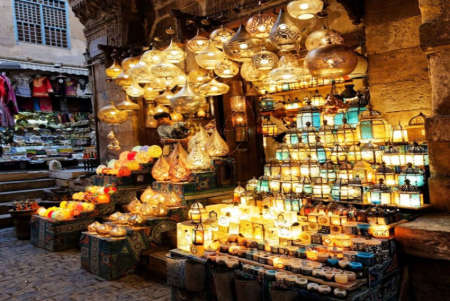
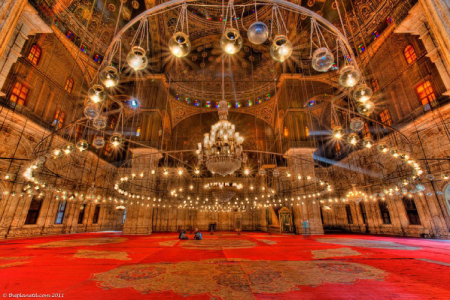


.png)


